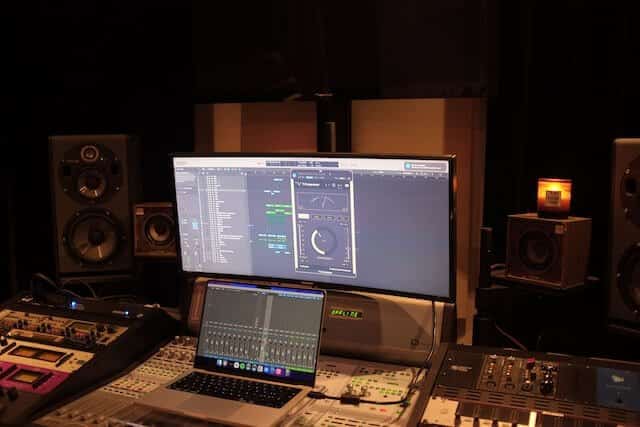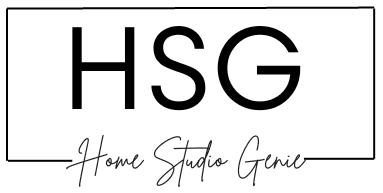Bringing more realism to your VSTs has always been a challenge in modern music production. Virtual instruments often sound robotic, and bland, and they lack emotion.
Real instruments on the other, can express the musicians feeling and take the listener through a musical journey. The question is, are real instruments better than their virtual counterparts?
In this article, we’re looking at a few points to hopefully bring more light to the question. We’ll look at the benefits and disadvantages of both real instruments and VSTs.
Let’s dive right in
Are Real Instruments Better Than Virtual Instruments?
Many musicians find a combination of both real instruments and virtual instruments to be the ideal approach. This allows them to harness the best of both worlds.

Real instruments have their own unique charm and offer an authentic experience. This experience can’t be fully replicated by VSTs.
The physicality of holding a real instrument, actually feeling the strings or the keys, creates a connection between you and the music.
It’s a deeply personal and emotional experience that many musicians cherish.
But hold on a second!
Virtual instruments also have a lot to offer. They provide great accessibility and convenience.
They give a vast array of sounds and instruments without the need for physical space or a hefty budget.
With VSTs, you can explore different genres and experiment with endless possibilities.
Let’s say I want to add an orchestra to my composition.
No problem!
Virtual instruments can make it happen.
When it comes to versatility, virtual instruments shine. They offer customizable sounds, effects, and endless options for sonic exploration.
Within your DAW, you can transform your guitar into a roaring synth or create ethereal atmospheres. This can easily be done with just a few clicks.
The ability to manipulate and shape sounds in ways that real instruments can’t always achieve is a major advantage of VSTs.
Virtual instruments offer practical benefits for recording and music production.
They eliminate the challenges of mic placement, room acoustics, and external noise interference.
You can achieve professional-quality recordings without the need for an elaborate setup. All you need is a good computer for music production and your DAW of choice.
On the plus side, virtual instruments integrate seamlessly with DAWs like Ableton Live, FL Studio, Logic Pro, and Cubase Pro 12. This will provide great precision and control over your music.
Are Virtual Instruments Worth It?
Virtual instruments are absolutely worth the investment. They provide versatility, affordability, and convenience.
VSTs are a fantastic investment for musicians and music producers. They offer a range of benefits that make them totally worth considering.
Virtual instruments give you incredible versatility. With just a few clicks, you have a wide variety of instrument sounds, from traditional ones to unique synthesizers.
This versatility allows you to experiment with different genres and styles, giving your music a fresh and dynamic edge.
But wait, what about my budget?
Virtual instruments are also budget-friendly. Unlike physical instruments, they won’t break the bank.
Many affordable or even free options are available, making them accessible to musicians with any budget.
On the plus side, you won’t have to worry about expensive studio rentals or the hassle of maintaining and transporting multiple instruments.
And here’s the cherry on top: convenience! VSTs save space and reduce clutter in your studio.
Say goodbye to needing a dedicated room for instrument storage. They seamlessly integrate with your digital audio workstation.
This will streamline your workflow and give you precise control over your compositions.
Virtual instruments keep up with the times too! Developers constantly improve their offerings, ensuring you get high-quality and realistic sounds.
No more settling for static samples; instead, enjoy dynamic and evolving VST sounds.
Best VSTs For Real Instrument Sounds
- Here are a few VSTs that can produce realistic sounds:
- Omnisphere 2.8
- Nexus VST
- Serum VST
- Kontakt Libraries
- Native Instruments Komplete
- Sound magic piano one
- Ample Sound Ample Bass
- Miroslav Philharmonik 2
- Vienna Symphonic Library
- Spectrasonics Trilian Bass Module
- Native instruments B4 Organ
- EZ drummer
- Spectrasonics Keyscape Virtual Keyboard Collection

Why Do Real Instruments Sound Better Than Virtual Instruments?
Real instruments sound better than virtual instruments due to their distinct sonic qualities. Real instruments have a natural resonance, tonal complexity, and depth that virtual instruments often struggle to replicate.
If you’re just starting out with music production, it’s a good idea to start out with a good Midi Keyboard Controller. It will allow you to get a feel for using a real instrument when creating music but at a fraction of the cost.
Important points to consider:
Organic Sound: Real instruments produce sound through physical vibrations and interactions, resulting in a rich and authentic sound. Virtual instruments, on the other hand, can sound artificial or lack depth.
Imperfections and Variations: Real instruments have inherent imperfections and variations in timbre, pitch, and dynamics, which contribute to their unique character and expressiveness. Virtual instruments tend to sound more uniform and predictable.
Interaction with the Player: Real instruments respond to the player’s touch, technique, and musical expression. This allows for greater control and nuance to be heard by the listener.
Virtual instruments, although improving, still struggle to capture the same level of responsiveness and expressiveness.
What Is The Difference Between A Synthesizer And A Real Instrument?
Real instruments have stood the test of time and hold a special place in the hearts of musicians. Real instruments, like guitars, pianos, and drums, produce sound through physical vibrations.
When you strum a guitar string or strike a piano key, it creates a resonance that travels through the air, captivating your ears with its organic richness.
On the other hand, synthesizers are electronic instruments or VSTs that generate sound through oscillators and filters. They offer an extraordinary level of versatility and sound manipulation.
Synthesizers can mimic real instruments, produce otherworldly tones, and create unique sounds.
Real instruments rely on physical techniques to create sound. Synthesizers give you the power to sculpt and shape sound waves using a myriad of controls and settings.
You can tweak parameters like waveforms, filters, and envelopes to craft sounds.
Another notable difference lies in the expressiveness. Real instruments often offer more tactile and nuanced control over dynamics and articulation.
The touch and feel of playing a real instrument allow musicians to convey a wide range of emotions in their performances.
Synthesizers, on the other hand, provide extensive modulation capabilities. You can manipulate parameters in real-time, add expressive effects, and create evolving textures.
This makes VSTs great for live performances and you can change sounds and presets in real-time.
So, are real instruments better than virtual instruments?
The main difference between synthesizers and real instruments lies in the method of sound generation, versatility, and expressiveness.
Real instruments offer the organic connection of physical vibrations, while synthesizers provide boundless sound manipulation.
Both real instruments and VSTs have unique strengths that can elevate your musical journey.
How Do I Make My VSTs Sound More Realistic?
To make VSTs sound more realistic, you can use techniques such as quantization, velocity, and space among others. These techniques add a human touch to your tracks and will avoid robotic-sounding tracks.
In other genres, the more nuances and creative mistakes there are, the more it sounds human. These include genres such as Jazz and classical where real instruments are often used.
More electronic genres such as EDM can benefit from an electronic sound that is quantized to the grid. This produces a rigid sound that is uniform and does not stray as much throughout the track.
Steps To Make VSTs Sound More Realistic:
- Focus on the rhythm section
- Use quality samples and VSTs
- Varying the velocity of your keys
- Limit the use of electronic effects
- Properly equalize the chosen sounds
- Loose quantization
- Use reverb to add a sense of space
- Collaborate with other musicians or instrumentalists

A real instrument is often not uniform in the way it sounds. For example, one strum of the guitar might sound different from the next one.
To emulate this in a VST, you’ll have to play around with the velocities and timing of the notes played. This technique will get you closer to more realistic-sounding VSTs.
Limitations to Using Virtual Instruments vs Real Ones
While virtual instruments offer a myriad of benefits, they do come with certain limitations compared to their real instrument counterparts.
One limitation lies in the tactile experience that real instruments provide, where the physical interaction with strings, keys, or breath can contribute to the expressiveness and personal connection to the music.
Virtual instruments, although offering various forms of control and expression through MIDI controllers and software parameters, may not replicate the same level of physical interaction.
Subtle variations in timbre and nuances that arise from the unique characteristics of individual real instruments can be challenging to replicate accurately in virtual instruments.
However, with advancements in modeling and sampling technologies, virtual instruments continue to bridge the gap and offer increasingly nuanced and expressive performances.
Why Is It Important To Add Live Instruments to Your Music?
Live instruments bring a sense of authenticity and human touch to your music. The nuances, emotions, and imperfections that come with live performances create a genuine connection with your audience.
Whether it’s the warmth of a real guitar strum or the soulful expression of a live saxophone, these elements breathe life into your music.
On top of all that, live instruments add depth and texture to your compositions. They can fill the sonic space with organic sounds and create layers of richness.
By combining live instruments with digital elements, you can achieve a fusion of traditional and modern sounds. This will result in a unique sonic signature that captivates the ears.
Adding live instruments also allows for spontaneous creativity and improvisation. Musicians can interact and respond to each other in real time.
This creates unexpected musical moments and exciting collaborations. It’s in these moments that the true magic of music shines through.
Incorporating live instruments can expand your musical horizons. Each instrument has its own unique timbre and character.
By exploring different instruments, you broaden your sonic palette and discover fresh melodies, harmonies, and rhythms.
Lastly, live instruments provide a dynamic and engaging element to your live performances.
Audiences love the energy and excitement of seeing skilled musicians playing instruments with passion and skill. It creates a memorable and immersive experience that sets your music apart.
Adding live instruments to your music brings authenticity, depth, spontaneity, and expanded creativity. It connects you with your listeners on a deeper level and allows you to create truly memorable and captivating musical experiences.
FAQs
Can Real Instruments Match The Range Of Sounds Of Virtual Instruments?
Yes, real instruments can match the range of sounds of virtual instruments. They offer diverse timbres and unique tones that virtual instruments can’t replicate.
Are Virtual Instruments As Expressive As Real Instruments?
Yes, virtual instruments can be just as expressive as real instruments. They’ve improved a lot with technology, simulating dynamics, articulations, and nuances effectively.
Do Real Instruments Offer A More Authentic Sound Than Virtual Instruments?
Yes, real instruments generally have a more authentic sound. They possess organic qualities that are hard to replicate digitally.

Mike is a skilled musician, guitar technician, and music producer with a passion for audio and gear. He excels in teaching guitar, editing podcasts/videos, and creating captivating soundscapes using cutting-edge hardware, software, and plugins. Mike’s talent and commitment make him highly sought-after in the industry, inspiring fellow musicians worldwide.


